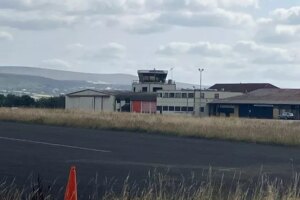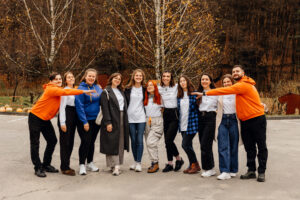
Permission to restore and upgrade the existing visitor experience at Fort Dunree was refused by An Coimisiún Pleanála due to pollution concerns at Lough Swilly.
Donegal County Council had sought approval from An Coimisiún Pleanála to undertake the restoration and upgrade as part of ‘The Fort Dunree Project,’ however, An Coimisiún Pleanála decided to refuse to approve the project.
Dunree Fort, built in 1798 to guard against a possible French invasion fleet, is located north of Buncrana on the Inishowen Peninsula, on the east side of Lough Swilly, and is occupied by a former military barracks.
The site was modernised in the late 19th century, and forms one of a series of defensive structures and fortifications built around Lough Swilly and used during the two World Wars. It was abandoned following the end of World War II.
A military museum at the site opened in 1986, and the site has grown over the recent decades with the inclusion of a cafe and shop.
If proposals were accepted, it was expected that annual visitor numbers would increase by 100,000 visitors over ten years.
Paul Caprani, Planning Commissioner of An Coimisiún Pleanála, concluded the proposed development would be “prejudicial to public health and could negatively impact on the Lough Swilly waterbody,” and was “contrary to the proper planning and sustainable development of the area.”
Planning Inspector, Donogh O’Donoghue, wrote that he could not “be satisfied that effluent from the development can be satisfactorily treated and/or disposed of on site in a manner that would not give rise to the risk of pollution to surface water and/or ground water.
“The proposed development would, therefore, be prejudicial to public health and would negatively impact on the Lough Swilly waterbody, achieving the relevant water quality status required under the Water Framework Directive.”
READ NEXT: Government increases Donegal County Council’s housing requirements by a third
Construction of a new exhibition space at the Redoubt Fort/High Fort was part of the proposed development, as well as a viewing gallery, an events space, an exhibition area, new toilets, a staff room, a lift, and an external viewing area.
There were plans for the upgrading of pathways along the external and internal perimeter of the Redoubt Fort Walls, and works to repair and stabilise the Blockhouses and High Guns.
A construction of a new walkway from the Lower Fort and Lough Swilly was planned, with glass and metal guarding, and the building of a new drawbridge to allow a new accessible route to the cafeteria and Lower Fort.
The lighthouse was due to be refurbished and conserved with a new projecting walkway and associated metal guarding and flooring.
Full restoration of four brick buildings was part of the submitted application, two of which were to facilitate a souvenir shop, pay station, toilets, storage and changing facilities, and the extension of an existing cafeteria.
O’Donoghue was critical of “deficiencies in the Site Characterisation Form” that was requested from Donegal County Council to demonstrate “that the proposed wastewater systems would not result in any conceivable risk to any surface and/or ground waterbodies including the Lough Swilly Waterbody” in achieving environmental objectives, and that if onsite wastewater propsosals could not be achieved, then “alternative solutions to deal with wastewater should be proposed and full details submitted.”
It was reported that the submitted Site Characterisation Form had a “number of very basic omissions and faults” including no photos of the site, and that the form set out that the availability of water to carry out tests was “constrained” and as such “the testing comprised of one round of infiltration tests rather than the required three tests.”
Furthermore, the Inspector’s Report found that due to the presence of rocky outcrops at the site, a Water Pollution Licence was required by Donegal County Council, and that a Licence to Discharge was more than likely required due to the “volume of effluent” being generated at the site.
Donegal County Council responded to criticisms in an additional Inspector’s Report; however, Finbarr Quigley, Environmental Scientist of the Inspectorate’s Environmental Team, wrote that they had “not demonstrated to a satisfactory level that the proposal to treat and discharge the projected volumes of wastewater arising at this site will not negatively impact on groundwater and coastal water quality.”





